The 10 Best James Webb Space Telescope Photos (So Far)
![]()
The James Webb Space Telescope just celebrated its second birthday, having started service on July 12, 2022. Here are Webb’s 10 best photos so far to mark the occasion.
Before diving into the series of images, it’s worth framing precisely what makes a picture worthy of inclusion. Ultimately, it comes down to a balance of beauty and scientific interest. Webb has captured hundreds of incredible photos, and while they are all fascinating in one way or another, they can’t all be included. To be counted among these 10, an image must be visually interesting, scientifically compelling, and show something in a way that no other telescope can. Webb has uniquely incredible powers, and all these images reflect that.
Without further ado, let’s get started.
Arp 142
As good a place as any to start is the new image that the James Webb Space Telescope team selected to mark Webb’s second birthday in space. This image shows a distorted spiral galaxy, known as the Penguin, and a compact elliptical galaxy, the Egg. The interacting galaxies are in what NASA describes as “an active embrace,” and the pair are known jointly as Arp 142.
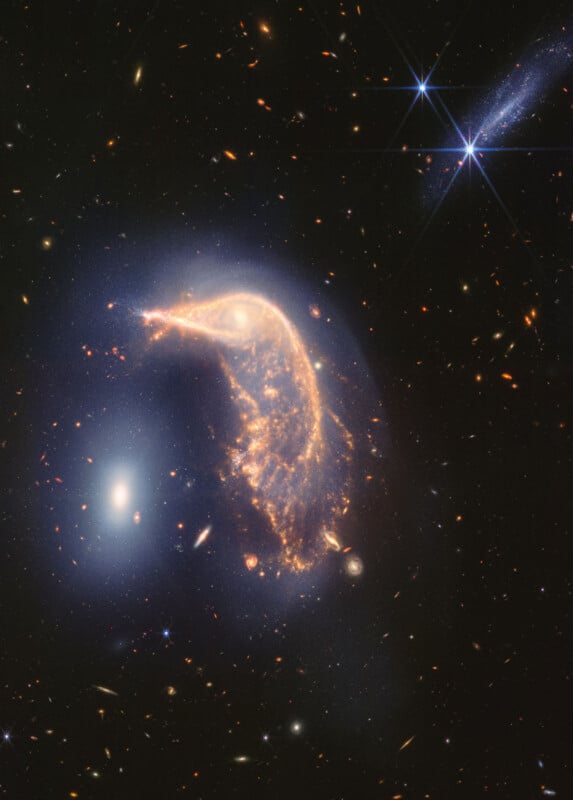
Pillars of Creation
One of Webb’s earliest images, this one shows the Pillars of Creation. A popular target for telescopes over the years, Webb shows that its ability to peer through cosmic dust can transform human understanding of deep space, even the parts of it we have seen before.
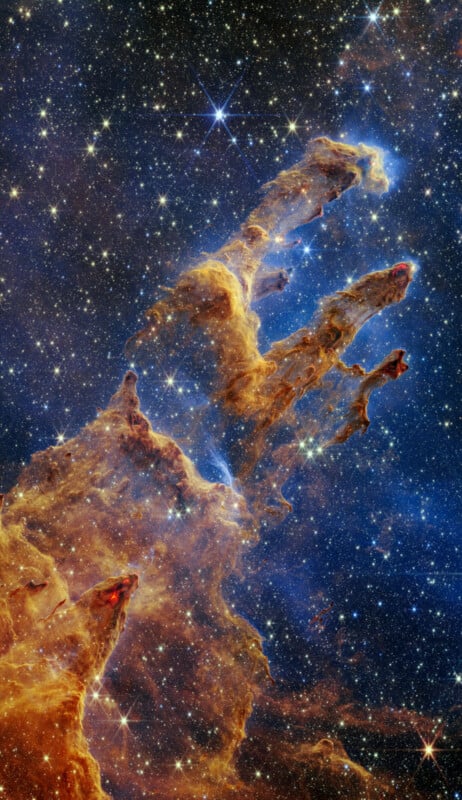
El Gordo Galaxy Cluster
The El Gordo (“the Fat One”) galaxy cluster includes hundreds of galaxies, some of which had never been seen in detail before. El Gordo is a gravitational lens, meaning its extreme gravitational forces magnify distant galaxies behind it, allowing scientists to see further back in time. In this case, there are lensed galaxies more than 10 billion light-years away. Webb is, essentially, a camera that can see back to the very early stages of the Universe.
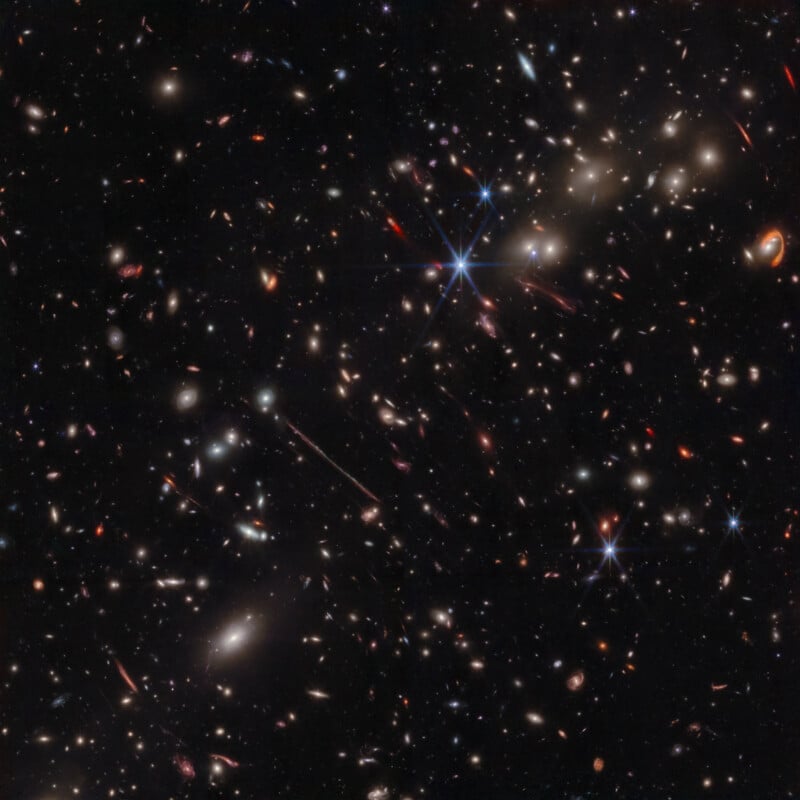
The Tarantula Nebula
A cosmic web located 161,000 light-years from Earth, the Tarantula Nebula is the largest and brightest star-forming region in the Local Group. It hosts some of the hottest and most massive stars in the Universe. It is a crucial area to help us understand how stars form, which is vital to understanding the Universe’s evolution.
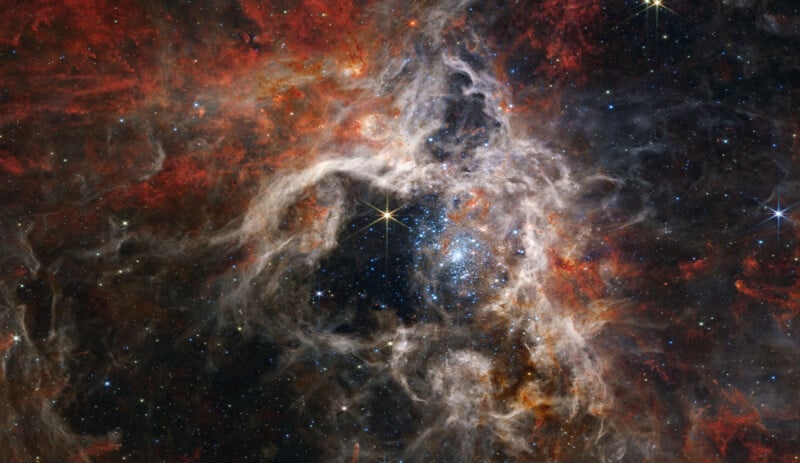
The Phantom Galaxy
This incredible image shot with Webb’s Mid-InfraRed Instrument (MIRI) shows the heart of Messier 74, also known as the Phantom Galaxy. Webb’s unprecedented resolution shows gas and dust in remarkable detail, while also capturing the nuclear star cluster at the galaxy’s center. This region, located 32 million light-years away, is a treasure trove of data.
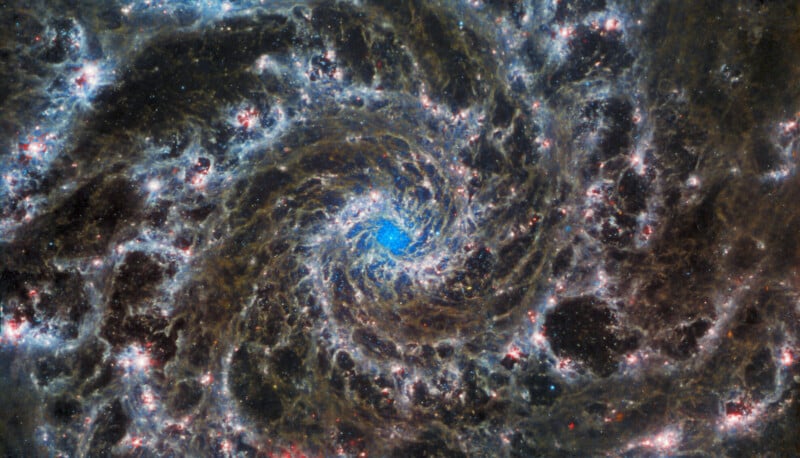
Jupiter
While Webb is built for looking very far away, it can also look at objects much closer to home, like Neptune and Saturn. But this image of Jupiter, processed by citizen scientists, shows the Jovian gas giant in remarkable detail. I prefer this image to another of Webb’s shots of Jupiter, but that one is also excellent.
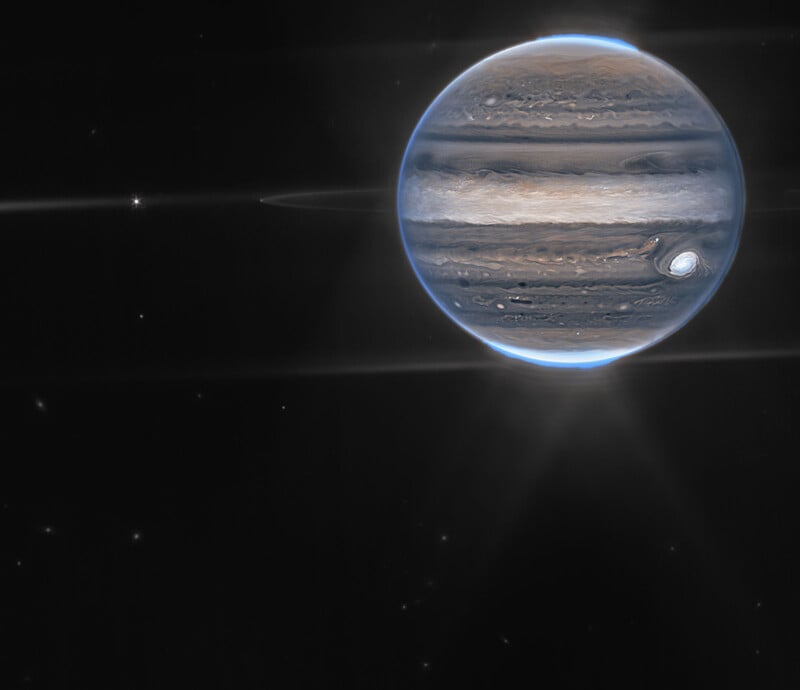
Cartwheel Galaxy
This composite of the Cartwheel Galaxy created using Webb’s NIRCam and MIRI instruments is one of Webb’s most visually stunning images yet. The chaotic galaxy has taught scientists new information about star formation and black holes, and helps show how the beautiful galaxy has changed throughout billions of years.

Sagittarius C
This image shot by NIRCam shows a 50 light-years-wide part of the Milky Way’s dense center. There are about half a million stars in this image of the Sagittarius C region, and researchers are still working through the data. This image is undoubtedly beautiful, but it is also among the best resources ever for studying protostars.
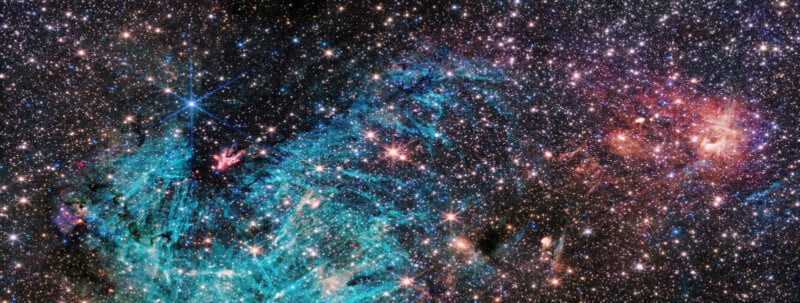
Herbig-Haro 211
This high-resolution, near-infrared image shows Herbig-Haro 211 (HH 211). Herbig-Haro objects “are formed when stellar winds or jets of gas spewing from newborn stars form shock waves colliding with nearby gas and dust at high speeds,” the Webb Space Telescope team explains. Scientists are still in the relatively early days of studying and understanding Herbig-Haro objects, and Webb makes that discovery process much easier.
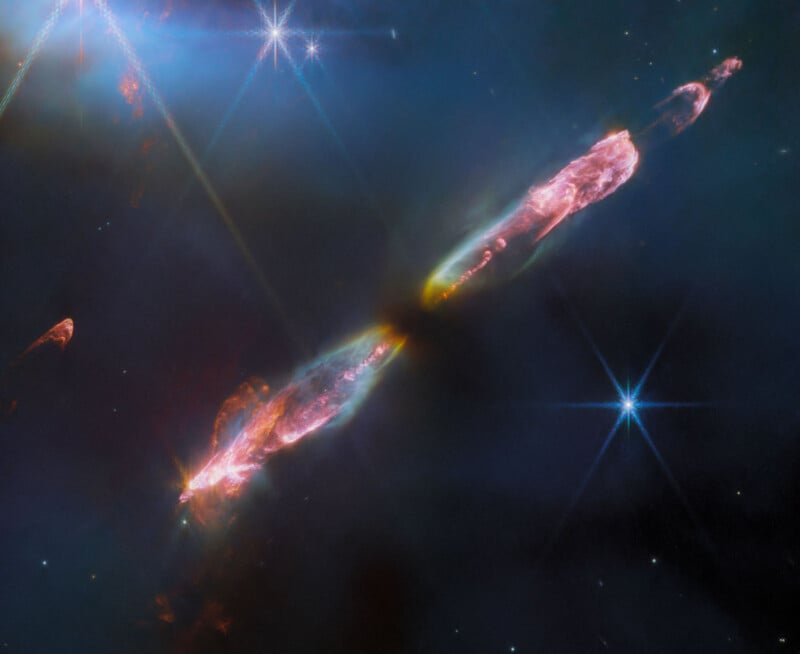
Carina Nebula
Referred to as the “cosmic cliffs,” the Carina Nebula is a glittering, beautiful stellar nursery and one of Webb’s first five targets. This stunning landscape is enormous — the tallest “peaks” are about seven light-years high — and home to significant star birth. Before Webb, we never got to see inside the dusty cosmic landscape.
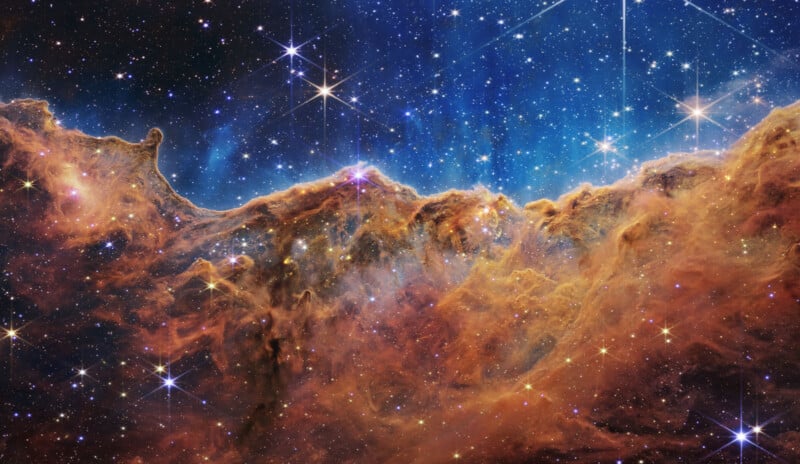
Image credits: NASA, ESA, CSA, STScI. Additional credits are noted in the individual image captions.